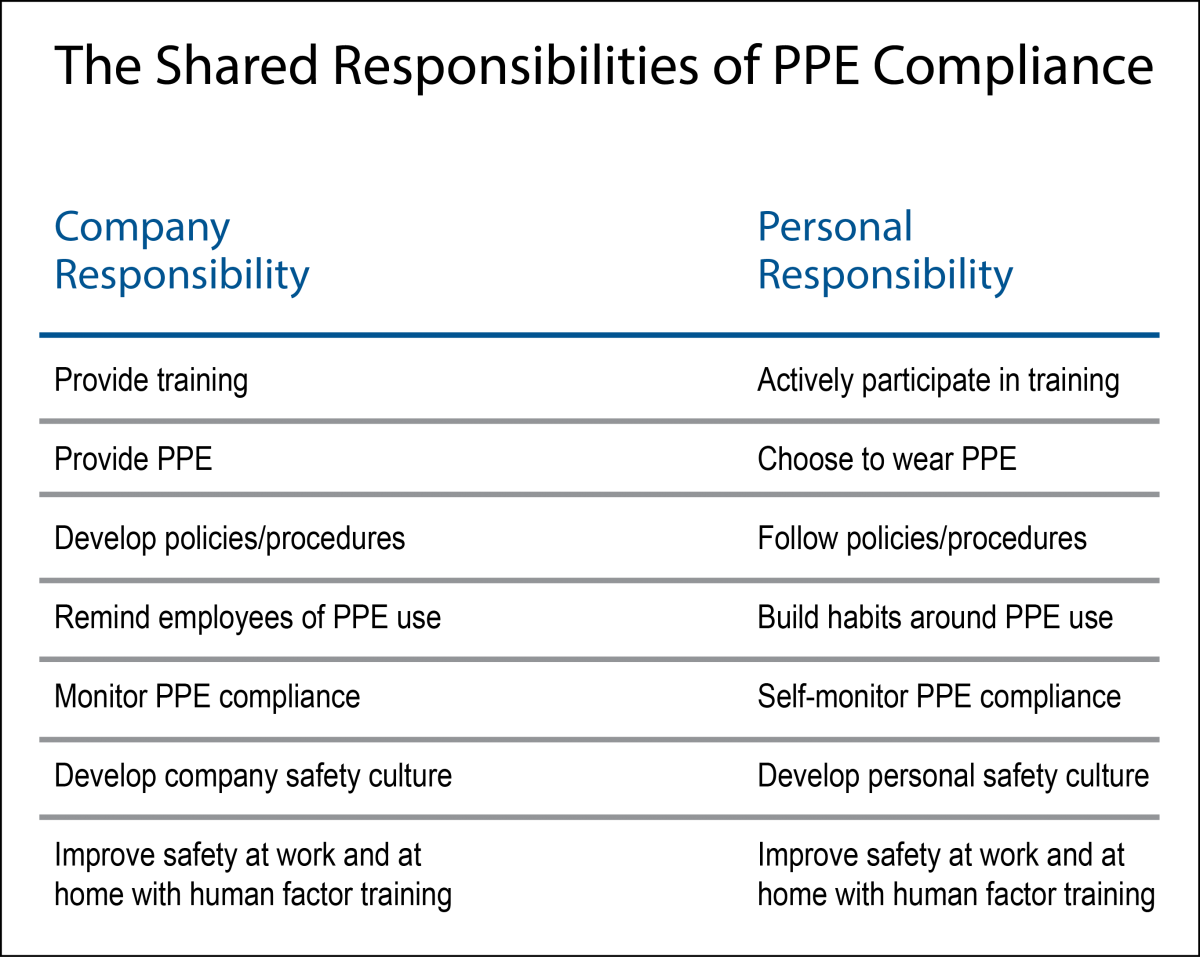What should an employer be responsible for when it comes to PPE? And on the flipside, how much responsibility should each individual employee have in a company’s PPE program?
It’s no surprise that for any PPE program to be truly effective both companies and workers have a role to play. But what exactly are those roles?

The chart to the right summarizes management and employees’ responsibilities when it comes to PPE compliance.
There are a number of factors that influence PPE compliance and it’s not enough for a company to simply buy the latest PPE. Adequate training is required and safety supervisors need to make sure they’re effectively monitoring PPE use. Employers also need to provide clear, sensible safety policies.
It’s up to employees to put safety training to good use by choosing to properly wear PPE. Making the choice isn’t always easy though, as rushing, frustration, fatigue and complacency can influence a poor decision by an employee with the best intentions. That’s why it’s so important for workers to develop good habits when it comes to protective equipment.
A healthy safety culture requires active participation from both employees and the company—and the responsibilities to be clearly understood by everyone.
To learn more about improving PPE compliance, check out our free PPE Compliance and Human Factors guide.
